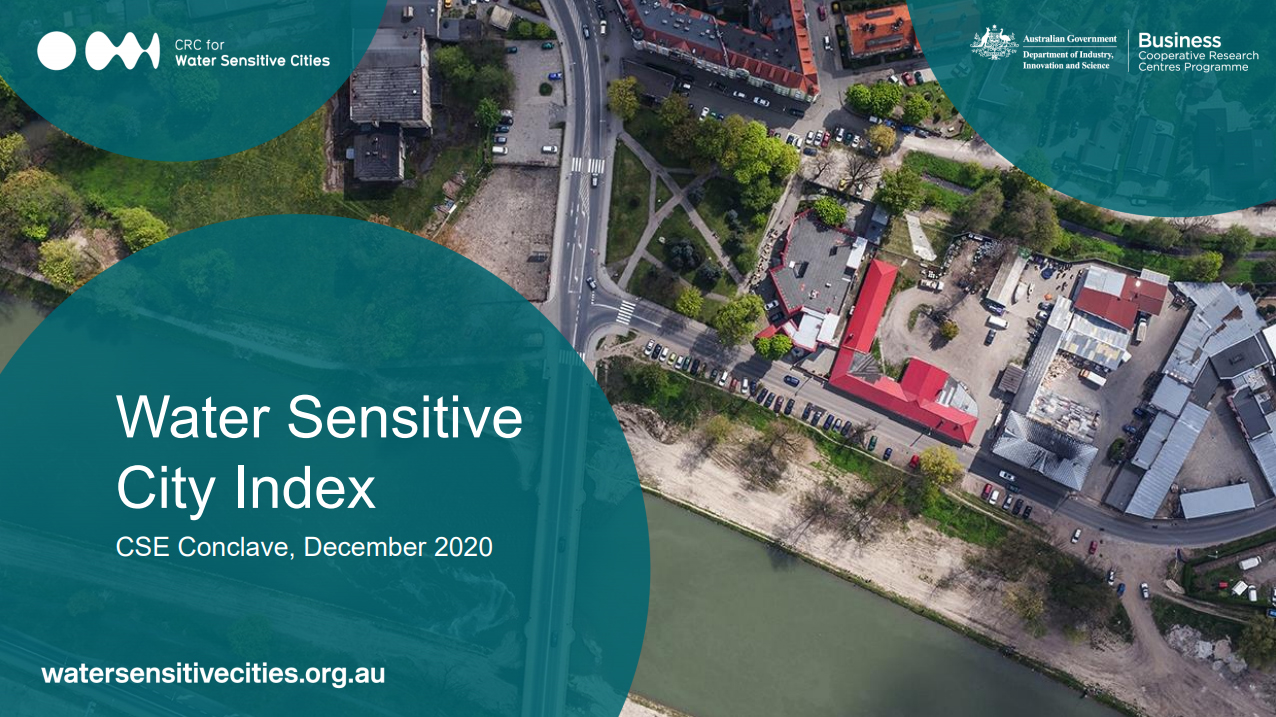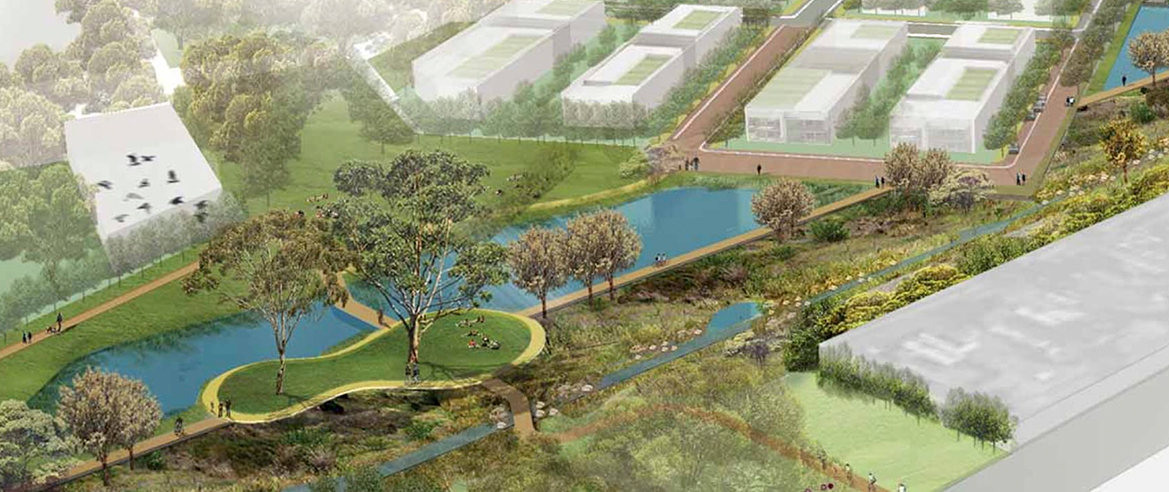Using the WSC Index to support green infrastructure solutions
In December 2020, Jamie Ewert (our National Engagement Executive) shared insights on how the WSC Index can support green infrastructure solutions with an international audience at the Online International Knowledge Conclave on Green Infrastructure hosted by Centre for Science and Environment (CSE).
The knowledge conclave, opened by Dr Kala Vairavamoorthy, Executive Director of the International Water Association, had several objectives:
- bring together academics, researchers and practitioners involved in green infrastructure from countries such as the United Kingdom, Indonesia, India and Australia
- disseminate information about tools that support use of green infrastructure in different contexts
- share experiences from case studies of green infrastructure, highlighting the challenges and lessons
- foster networking with key players and peer-to-peer learning.

Jamie’s participation was part of a new knowledge partnership MoU between the CRC for Water Sensitive Cities, CSE and Alluvium International to increase capacity to deliver WSC in India and to bring lessons back to Australia.
During his presentation, Jamie explained the various urban water transition phases, and how responses to water-related issues differ depending on the phase. Early phases are generally characterised by large scale centralised infrastructure and institutions, while later phases are characterised by flexible, green infrastructure solutions with a range of governance arrangements.
He then explained how cities and towns can use the WSC Index to determine how water sensitive they are. This tool benchmarks a city’s performance against a range of water sensitive indicators. By helping cities and towns identify their current position, the tool:
- provides insights to support action for green infrastructure
- helps set targets and track progress
- fosters the industry collaboration that underpins green infrastructure solutions.

Harry Virahsawmy (from CRCWSC partner Alluvium International) also presented practical examples of water sensitive urban design and green infrastructure form Australia. You can find all the presentations from the two-day conclave here.
To help support the growing community of practice around green infrastructure, CSE launched an online library of case studies at the conclave, called the Compendium of Green Infrastructure Network systems (C-GIN). This open platform uses case studies to showcase green infrastructure projects in India (37 case studies) and internationally (36 case studies). It brings together the latest thinking on natural capital, ecosystem services and nature-based solutions. Each case study outlines the intervention, the timeline, the authorities/stakeholders involved, the outcomes and the lessons.
More about the CRCWSC’s work in India
We recently shared some lessons on tailoring green infrastructure solutions to improve liveability and promote water efficiency in new and existing cities in Andhra Pradesh. You can read more about it here.